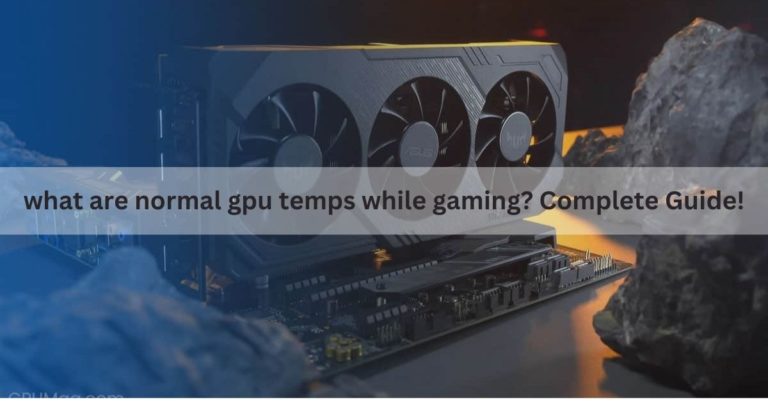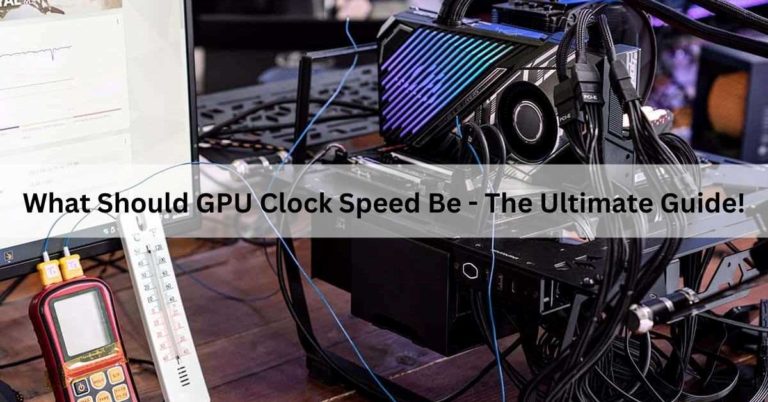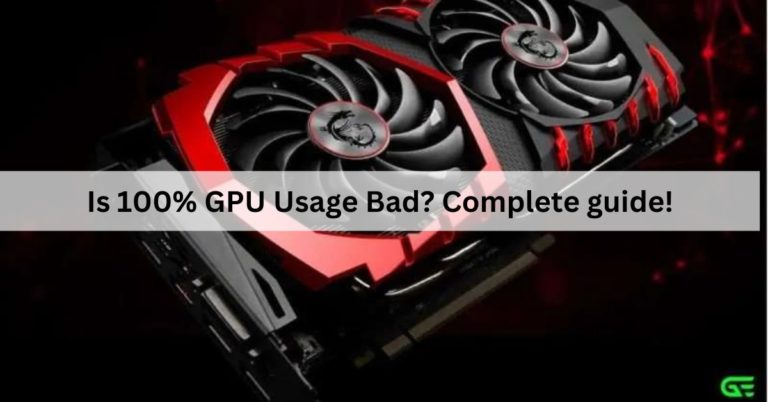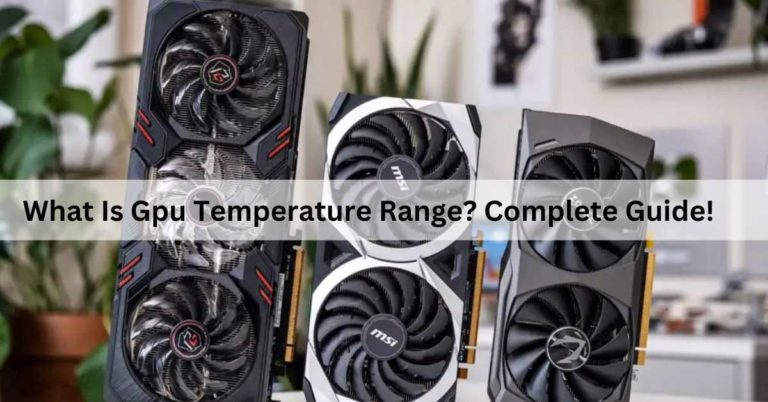What Is GPU In Computer? Ultimate Guide!
In today’s digital world, computers play a significant role in our daily lives. We use them for various tasks, from browsing the internet to playing video games and everything in between.
The graphics processing units (GPUs) of a computer are capable of rendering and processing images and videos, making it possible to run graphics-intensive tasks like gaming and video editing on such a computer.
This article aims to explain what a GPU is, how it works, and its importance in modern computing, all in easy-to-understand language.
Understanding the GPU – Let’s Take A Tour!
A GPU, or Graphics Processing Unit, is like a super-fast part of your computer. It’s in charge of showing pictures and videos on your screen.
While the central computer brain (CPU) does regular computer stuff, the GPU is excellent at making images and videos look good and fast.
The GPU is also useful for gaming and other applications that need a lot of visuals. The GPU also takes some of the load off the CPU, allowing it to focus on other tasks.
What Are GPUs Used For?

GPUs (Graphics Processing Units) are used for rendering graphics in video games, video editing, and graphical applications. Additionally, GPUs excel in parallel processing, making them essential for tasks like scientific simulations, artificial intelligence, and cryptocurrency mining.
What Does a GPU Do?
A GPU (Graphics Processing Unit) is designed to handle and accelerate graphics-related tasks. It renders images, videos, and animations for display on a monitor. GPUs also excel in parallel processing, enabling efficient computation for various tasks such as gaming, video editing, and scientific simulations.
What is a cloud GPU?
A cloud GPU refers to a Graphics Processing Unit that is hosted and accessed through cloud computing services. Users can remotely utilize the computational power of a GPU for tasks like graphics rendering, machine learning, and parallel processing.
Are GPUs and graphics cards the same?
No, GPUs (Graphics Processing Units) and graphics cards are not the same. A GPU is a chip that processes graphics, while a graphics card is the physical hardware containing the GPU, memory, and interfaces, connected to the motherboard for displaying graphics on a monitor.
CPU vs. GPU: Powerful options for your computing needs.
CPUs (Central Processing Units) and GPUs (Graphics Processing Units) offer powerful options for computing needs. CPUs excel in general-purpose tasks, while GPUs, optimized for parallel processing, are ideal for graphics, scientific simulations, and artificial intelligence.
What are the benefits of GPU computing?
GPU computing offers benefits such as accelerated parallel processing, making it highly efficient for tasks like graphics rendering, scientific simulations, machine learning, and data processing. GPUs enhance performance and enable faster computation compared to traditional CPU-centric approaches.
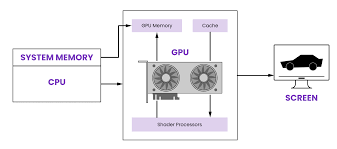
How does GPU computing work?
GPU computing works by leveraging the parallel processing capabilities of Graphics Processing Units (GPUs). Unlike CPUs, which are optimized for sequential processing, GPUs excel at handling multiple tasks simultaneously.
This parallelism is particularly beneficial for tasks such as rendering graphics, scientific simulations, and machine learning.
Developers use specialized programming languages and frameworks like CUDA or OpenCL to harness the power of GPUs, allowing them to break down complex computations into smaller tasks that can be processed concurrently by the multitude of cores present in a GPU.
This parallel approach significantly speeds up computations compared to the more sequential processing style of traditional Central Processing Units (CPUs).
GPU vs. Graphics Card: What’s the Difference?
A GPU (Graphics Processing Unit) is the processing chip responsible for rendering graphics, while a graphics card, or GPU card, refers to the physical hardware that houses the GPU along with memory and interfaces, connecting to the motherboard for displaying visuals on a monitor.
How Does a GPU Work? – Check It Out!
To understand how a GPU works, picture your computer as a canvas for an artist. The CPU is like the artist who plans everything, and the GPU is like a brush that quickly adds colors and details to make the picture look great.
The GPU processes the data and sends it to the monitor. The CPU then processes the data and sends it to the GPU. The GPU then processes the data and sends it to the monitor.
Also read: Can I Bring A Gpu On A Plane? Ultimate Guide!
The Power of Parallel Processing in GPUs – Go In-Depth!
A GPU’s main job is to handle information about pictures and videos. It does this by doing many small jobs simultaneously, like a team.
This teamwork makes GPUs great at tasks like making graphics look good. GPUs have many small workers, each good at caring for a specific part of the picture or video.
This parallel processing allows GPUs to handle large amounts of data quickly and efficiently. GPUs can handle large amounts of data quickly and accurately, making them ideal for tasks like gaming and video editing.
Also read: Are GPU Fans Intake Or Exhaust? Optimize GPU Cooling!
GPU’s Role in Enhancing Gaming and Video Editing – Important Role!
In games and when you edit videos, the GPU does the hard work of handling things like 3D shapes and textures and making the lighting look good.

This helps your games play without problems and makes your videos sharp and clear. The GPU is swift and sound at its job because it splits the work into small pieces, and many parts can work simultaneously.
The workers on the GPU are much more efficient and can complete tasks much faster than CPUs. This is why GPUs are often used for gaming and other graphics-intensive tasks.
Also read: How To Undervolt GPU? The Ultimate Guide!
The Importance of GPUs in Modern Computing – Here is Some Information!
GPUs do more than just make games and videos better. They are significant in many areas because they are super powerful. Here are some places where GPUs are very important:
- Video Editing:
Video editors rely on GPUs to edit and render videos. Whether cutting and splicing clips or adding special effects, a good GPU accelerates the process, saving time and improving the quality of the final product.
- Scientific Computing:
GPUs have applications in scientific fields such as physics simulations, weather modeling, and medical research. Their parallel processing capabilities make them well-suited for handling complex mathematical calculations.
- Gaming:
GPUs are the heart and soul of modern gaming. They render realistic 3D environments, complex character models, and special effects in games. A powerful GPU ensures that your games run smoothly and look stunning.
- Graphics Design:
Graphic designers use GPUs to design software like Adobe Photoshop and Illustrator. These programs demand substantial computing power for tasks like rendering high-resolution images and videos.
Choosing the Right GPU – Here are Some Tips!
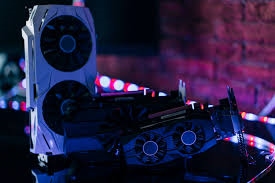
When purchasing a computer or upgrading your existing one, selecting the proper GPU is crucial. The choice depends on your specific needs and budget. Here are some key factors to consider:
- Budget:
Entry-level GPUs are suitable for everyday tasks and casual gaming. Mid-range GPUs offer a balance between price and performance, while high-end GPUs are designed for serious gamers and professionals.
- Performance:
Consider the performance requirements of the tasks you’ll use the GPU for. Gamers, for instance, should look for GPUs with higher frame rates and better graphics quality.
- Compatibility:
Ensure your GPU is compatible with your computer’s hardware, including the motherboard and power supply.
- VR Support:
If you’re interested in virtual reality gaming, ensure the GPU supports VR technology and has the necessary ports.
- Brand and Model:
Research different brands and models to find the one that suits your needs best. Popular GPU manufacturers include NVIDIA and AMD.
What is the difference between a GPU and a graphics card in a pc?
A GPU (Graphics Processing Unit) is the hardware component responsible for rendering graphics. A graphics card, also known as a GPU card or video card, is the physical expansion card that houses the GPU and interfaces with the motherboard to display visuals on a monitor.
Frequently Asked Questions:
1. What does GPU stand for?
GPU stands for Graphics Processing Unit.
2. How does a GPU differ from a CPU in a computer?
A CPU (Central Processing Unit) is the main brain of a computer, handling general tasks, while a GPU specializes in processing images and videos, making graphics-intensive tasks faster and better.
3. What are the primary functions of a GPU in a computer?
A GPU processes data related to images and videos, making graphics and visuals on your screen look good and run smoothly.
4. What’s the difference between a CPU and a GPU? When I switch on my computer, it shows GPU information. What does it mean?
A CPU (Central Processing Unit) is the general-purpose brain of a computer, handling tasks like running applications. A GPU (Graphics Processing Unit) specializes in rendering graphics and accelerating parallel processing tasks. At startup, GPU information refers to the installed graphics card and its specifications.
5. How does a CPU work compared to a GPU?
A CPU (Central Processing Unit) performs general-purpose tasks in a computer, managing instructions and calculations for various applications. It excels at sequential processing and is crucial for overall system performance.
6. What’s the difference between a CPU and a GPU in a computer? What’s the use of CPU and GPU?
A CPU (Central Processing Unit) handles general-purpose tasks and executes instructions for applications. A GPU (Graphics Processing Unit) specializes in parallel processing, enhancing graphics rendering and accelerating tasks like video rendering and machine learning.
7. Which is better, a good CPU + bad GPU or a bad CPU + good GPU?
A good CPU with a bad GPU is generally better for overall system performance, as the CPU plays a crucial role in various tasks. However, the ideal balance depends on specific use cases.
8. What is the difference between GPU memory and CPU memory?
GPU memory, also known as VRAM, is specialized for graphics tasks, handling large datasets concurrently. CPU memory, or RAM, is general-purpose, managing tasks and data for the processor in a system.
FINAL WORDS:
The GPU, or Graphics Processing Unit, is a crucial component that enhances our digital experiences, from gaming to design and beyond. Understanding its role and choosing the proper GPU can significantly improve your computing journey. So, next time you enjoy a stunning game or a beautifully edited video, remember that the GPU is the unsung hero behind the scenes.
Also read: What Is Gpu Temperature Range? Complete Guide! Do GPU fans always spin? – Causes And Fixed – 2023 What Is A Good Gpu Temperature? Complete Guide! Pytorch Check If GPU Is Available? Complete Guide!


